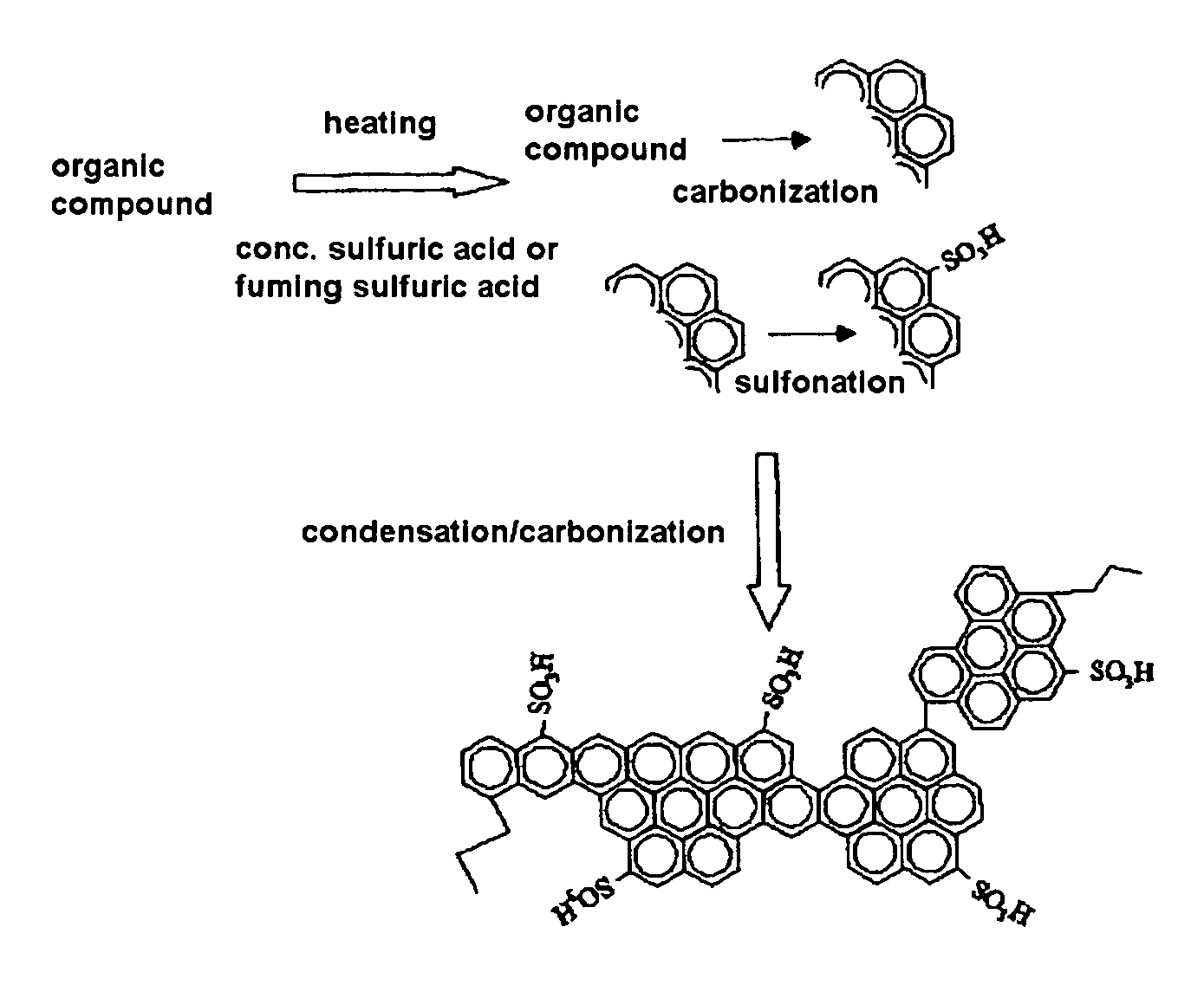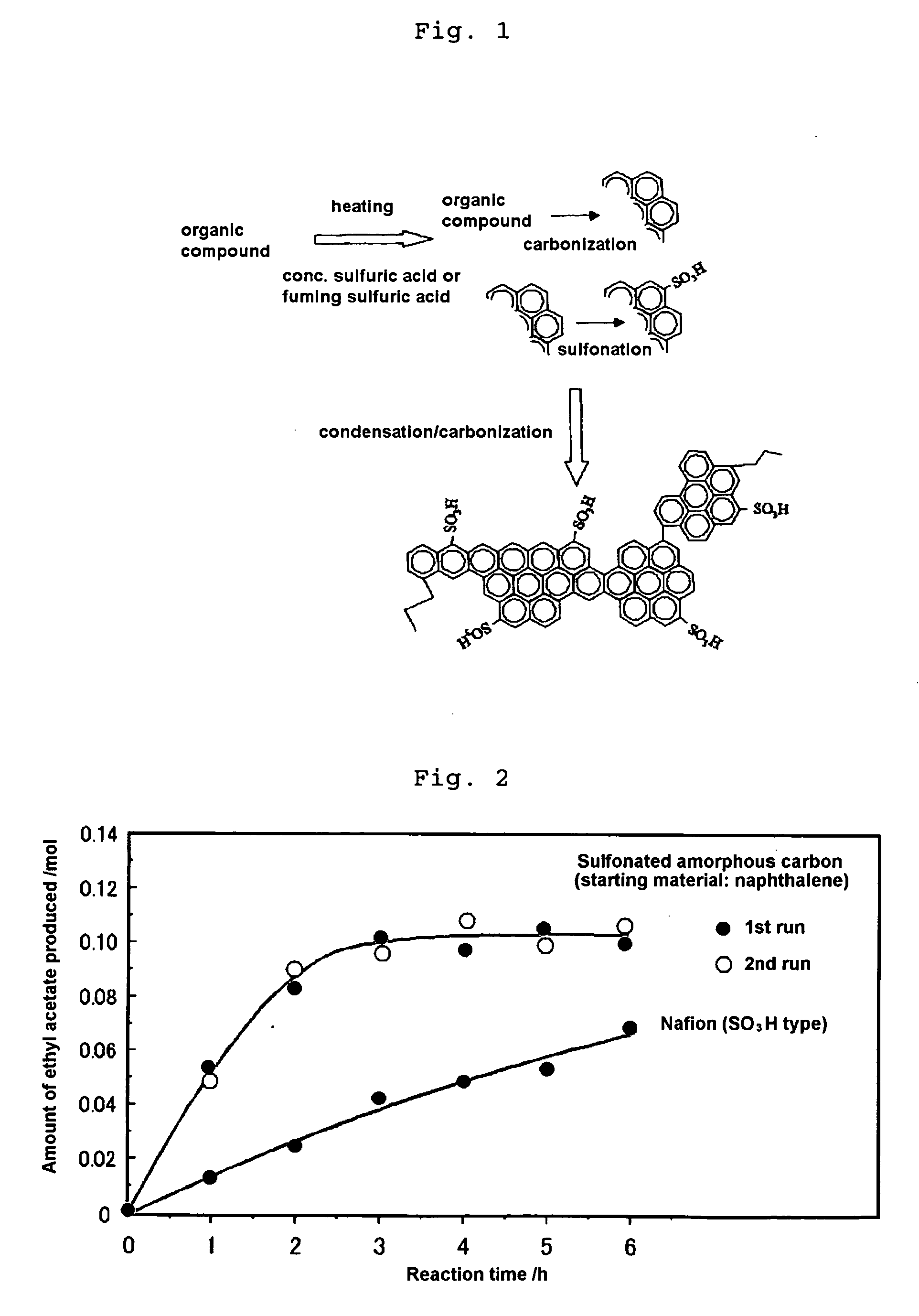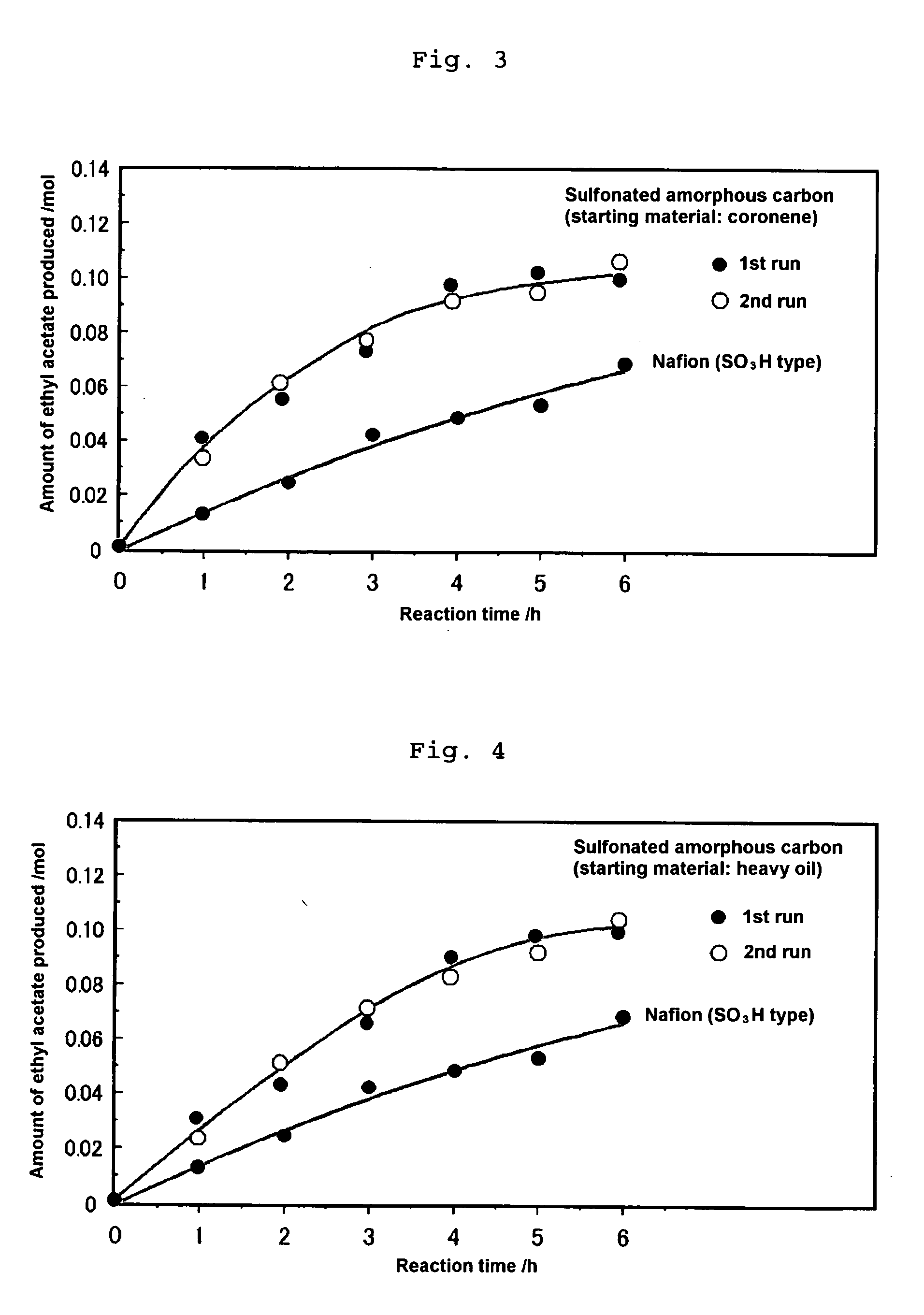Sulfonated Amorphous Carbon, Process for Producing the Same and Use Thereof
a technology of amorphous carbon and sulfonated amorphous carbon, which is applied in the field of amorphous carbon, can solve the problems of increasing the cost of the fuel cell, poor thermal stability and chemical stability, and the inability of nafion to operate the cell at higher temperatures, and achieves excellent proton conductivity, thermal stability and chemical stability, and low cost
- Summary
- Abstract
- Description
- Claims
- Application Information
AI Technical Summary
Benefits of technology
Problems solved by technology
Method used
Image
Examples
example 1
Production of Sulfonated Amorphous Carbon from Naphthalene
[0065]Twenty grams of naphthalene was added to 300 ml of concentrated sulfuric acid (96%). The mixture was heated at 250° C. for 15 hours and then evaporated under reduced pressure at 250° C. to remove excess concentrated sulfuric acid, thereby yielding a black powder. The black powder was washed with 300 ml of distilled water, and this procedure was repeated until the amount of sulfuric acid remaining in distilled water after washing became negligible to detect by the elemental analysis to yield an amorphous carbon having sulfonate group introduced therein.
[0066]The sulfonated amorphous carbon powder was shaped under pressure to prepare a disk having a thickness of 0.7 mm and a diameter of 10 mm. Platinum was deposited on one side of the disk and the proton conductivity was then determined in accordance with the alternating current impedance method described above. It was confirmed that the proton conductivity of the amorpho...
example 2
Production of Sulfonated Amorphous Carbon from Coronene
[0067]Five grams of coronene (C24H12) was added to 100 ml of concentrated sulfuric acid (96%). The mixture was heated at 250° C. for 15 hours and then evaporated under reduced pressure at 280° C. to remove excess concentrated sulfuric acid, thereby yielding a black powder. The black powder was washed with 300 ml of distilled water, and this procedure was repeated until the amount of sulfuric acid remaining in distilled water after washing became negligible to detect by the elemental analysis to yield an amorphous carbon having sulfonate group introduced therein.
[0068]The powdery amorphous carbon having sulfonate residue introduced therein was shaped under pressure to prepare a disk having a thickness of 0.7 mm and a diameter of 10 mm. Platinum was deposited on one side of the disk and the proton conductivity was then determined in accordance with the alternating current impedance method described above. It was confirmed that the...
example 3
Production of Sulfonated Amorphous Carbon from Heavy Oil
[0069]Ten grams of heavy oil was added to 300 ml of concentrated sulfuric acid (96%). The mixture was heated at 250° C. for 15 hours and then evaporated under reduced pressure at 250° C. to remove excess concentrated sulfuric acid, thereby yielding a black powder. The black powder was washed with 300 ml of distilled water, and this procedure was repeated until the amount of sulfuric acid remaining in distilled water after washing became negligible to detect by the elemental analysis to yield an amorphous carbon having sulfonate group introduced therein.
[0070]The powdery amorphous carbon having sulfonate residue introduced therein was shaped under pressure to prepare a disk having a thickness of 0.7 mm and a diameter of 10 mm. Platinum was deposited on one side of the disk and the proton conductivity was then determined in accordance with the alternating current impedance method described above. It was confirmed that the proton ...
PUM
| Property | Measurement | Unit |
|---|---|---|
| humidity | aaaaa | aaaaa |
| temperature | aaaaa | aaaaa |
| temperature | aaaaa | aaaaa |
Abstract
Description
Claims
Application Information
 Login to View More
Login to View More - R&D
- Intellectual Property
- Life Sciences
- Materials
- Tech Scout
- Unparalleled Data Quality
- Higher Quality Content
- 60% Fewer Hallucinations
Browse by: Latest US Patents, China's latest patents, Technical Efficacy Thesaurus, Application Domain, Technology Topic, Popular Technical Reports.
© 2025 PatSnap. All rights reserved.Legal|Privacy policy|Modern Slavery Act Transparency Statement|Sitemap|About US| Contact US: help@patsnap.com



